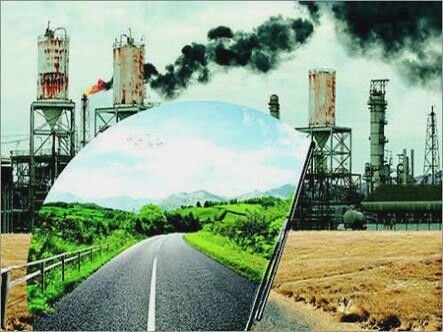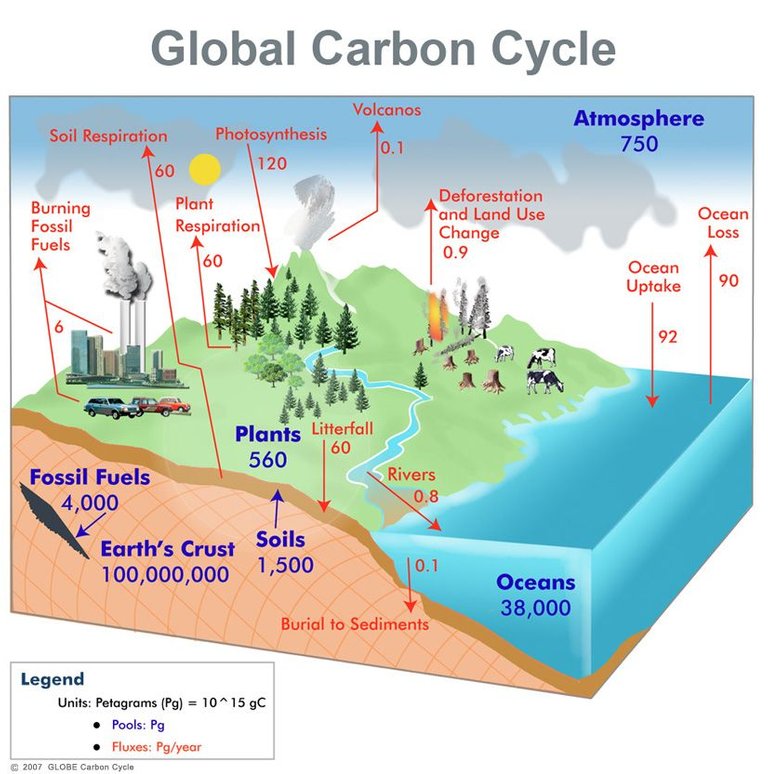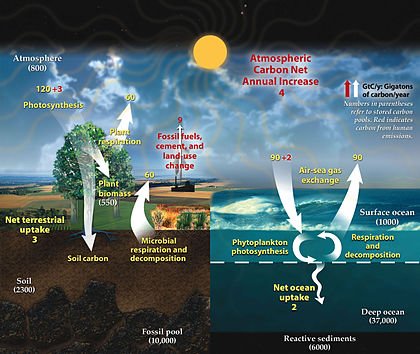AIR POLLUTION CONTROL

Credit: indiaMART
Local activities have great effect on the global level, this is because, the atmosphere is susceptible to pollution from natural sources and from human activities too. Some natural phenomena, such as volcanic eruptions and forest fires, may not only have local and regional effects but also long-lasting global ones. Nevertheless, only pollution caused by human activities, such as industry and transportation, is subject to mitigation and control. Most air contaminants originate from combustion processes (human activity).

Air pollution control is the techniques employed to reduce or eliminate the emission of substances into the atmosphere that can harm the environment and human health as well. The control of air pollution is one of the principal areas of pollution control, along with wastewater treatment, solid-waste management, and hazardous-waste management which helps in curbing the global menace. Air is considered polluted when it contains certain substances in high concentrations and for durations long enough to cause harm or undesirable effects on which these effects can be detrimental on human health, property, and atmospheric visibility.
Some local methods are;
. ocean fertilization
. carbon sequestration; carbon sink; climate change mitigation
. carbon offset

.Ocean fertilization:
Ocean fertilization is an untested geoengineering technique though sounds effective is designed to increase the uptake of carbon dioxide from the air by phytoplankton macroscopic plants that reside at or near the surface of the ocean. The premise is that the phytoplankton, after blooming, would die and sink to the ocean floor, taking with them the carbon dioxide that they had photosynthesized into new tissues.
This bio-geoengineering technique would involve dissolving iron or nitrates in to the surface waters of specific ocean regions to promote the growth of phytoplankton where primary productivity is low. For the scheme to be effective, it is thought that a sustained effort would be required from a fleet of vessels covering most of the ocean.

.Carbon sequestration:
This is the storage of carbon that has the immediate potential to become carbon dioxide gas. It is the long-term storage of carbon in plants, soils, geologic formations, and the ocean which occurs both naturally and as a result of anthropogenic activity. This is as a response to growing concerns about climate change resulting from increased carbon dioxide concentrations in the atmosphere. Considerable interest has been drawn to the possibility of increasing the rate of carbon sequestration through changes in land use and forestry and also through geoengineering techniques such as carbon capture and storage.
Anthropogenic activities such as the burning of fossil fuel have released carbon from its long-term geologic storage as coal, petroleum, and natural gas and have delivered it to the atmosphere as carbon dioxide gas
Carbon dioxide is a very effective greenhouse gas — a gas that absorbs infrared radiation emitted from Earth’s surface.
As carbon dioxide concentrations rise in the atmosphere, more infrared radiation is retained, and the average temperature of Earth’s lower atmosphere rises. This process is referred to as global warming.

.Carbon sink and Climate change mitigations:
Carbon sink are reservoirs that retain carbon and keep it from entering Earth’s atmosphere. Carbon is transferred naturally from the atmosphere to terrestrial carbon sinks through photosynthesis; it may be stored in above ground biomass
and in soils as well. For example, deforestation is a source of carbon emission into the atmosphere, but forest regrowth is a form of carbon sequestration, the forests themselves serving as carbon sinks.
Activities like afforestation (conversion of non forested land to forest), reforestation(conversion of previously forested land to forest), improved forestry or agricultural practices, and revegetation is encouraged by the Kyoto Protocol under the United Nations Framework Convention on Climate Change which allows countries to receive credits for their carbon-sequestration activities in the area of land use, land-use change, and forestry as part of their obligations under the protocol. According to the Intergovernmental Panel on Climate Change (IPCC), improved agricultural practices and forest-related mitigation activities can make a significant contribution to the removal of carbon dioxide from the atmosphere at relatively low cost. These activities could include improved crop and grazing land management (i. e efficient fertilizer use to prevent the leaching of unused nitrates, tillage practices that minimize soil erosion, the restoration of organic soils, and the restoration of degraded lands).

.Carbon offset:
This is any activity that compensates for the emission of carbon dioxide or other greenhouse gases (measured in carbon dioxide equivalents) by providing for an emission reduction elsewhere. The term offset refers to emissions compensated for by decreases at another facility which has been used since the late 1970s as part of the U.S. Clean Air Act, in which new emissions in high-pollution areas were allowed only where other reductions occurred to offset the increases.
Some projects that produce carbon offsets;
Destruction of potent industrial greenhouse gases such as halocarbons.
Renewable energy projects, such as building wind farms that replace coal-fired power plants.
Carbon sequestration in soils or forests, such as tree-planting activities.
Energy-efficiency improvements, such as increasing insulation in buildings to reduce heat loss or using more-efficient vehicles for transportation.

Conclusion
The best way to protect air quality is to reduce the emission of pollutants by changing to cleaner fuels and processes. Pollutants not eliminated in this way must be collected or trapped by appropriate air-cleaning devices as they are generated and before they can escape into the atmosphere.
Thanks for reading
@dazzy

References;
The United States clean Air Act_Wiki
Carbon sequestration
Ocean fertilization_geo-engineering
Carbon offsetting_climatecare
.jpeg)
.jpeg)


.jpeg)
Good one
I hope this stops the spread of apolo
Haha, I think it would if the message gets to the top emitters of this gases. And if we care for our environment as well.
Hello @dazzy, quite a nicely written article. Pollution is a big issue that affect our environment and a lot of measures are taken to combat the effect and prevent Global warming among other adverse effects.
However, you should make sure the images you use in your article are free for reuse to prevent copyright infringement and also to ensure your post would be seen and curated by the steemstem community.
You can check guidlines for creating steemstem posts here and copyright guidelines here join us on discord to learn more.

I couldn't agree more. Thanks altogether @rharphelle
Quick Originality Check
@originalworks should double check, but a simple run through a Plagarism Checker shows the results to the right. Don't allow this to alarm you as I flipped through most of these links and they had only a fraction of a sentence or a commonly used sentence listed as similar. The main source of the similar content was Britannica and it is likely the sources you listed pulled their information from Britannica. Either way, I would encourage you to use a plagiarism checker prior to posting to make sure you catch sentences like the one below and reword it or use quotes / turn them into a block quote so that you are all 👌.
The citations on images are great!
Quality:
I believe the article is interesting and well-written. I hope you elaborate on different clean fuel in future posts and I think it would flow well from this article about cleaning practices. I also think it would be interesting to discuss the politics surrounding trying to implement these efforts and I would love to get with you on some of the content I've written before on it if you would like some inspiration.
Thanks!
I would be so much interested in it...
Learning from you would be a nice idea
Congratulations!,@dazzy Your post has been upvoted by @reachout via the
nigeriatagOur goal is to support Nigerian minnows on Steemit. Join our discord group https://discord.gg/NWAkKfn
Proudly sponsored via SP donation from @eturnerx , @rufans & @solomon158
Upvotes Benefactor : @bleepcoin & the rest of us
###### Join Our Trail here: https://steemauto.com/dash.php?i=15&id=1&user=reachout
Curator On Duty: Richie, the Manual Bot (BETA)
## Also,We'd like invite you to the @eoscafe discord community https://discord.gg/wdUnCdE , be part of something great
Please make sure images used in your article are from a free source. I noticed some are from a copyrighted source. Thank you.
Copied...👍